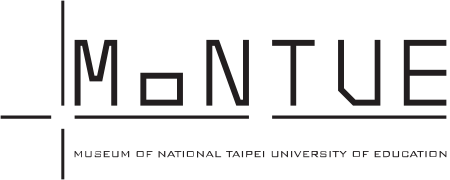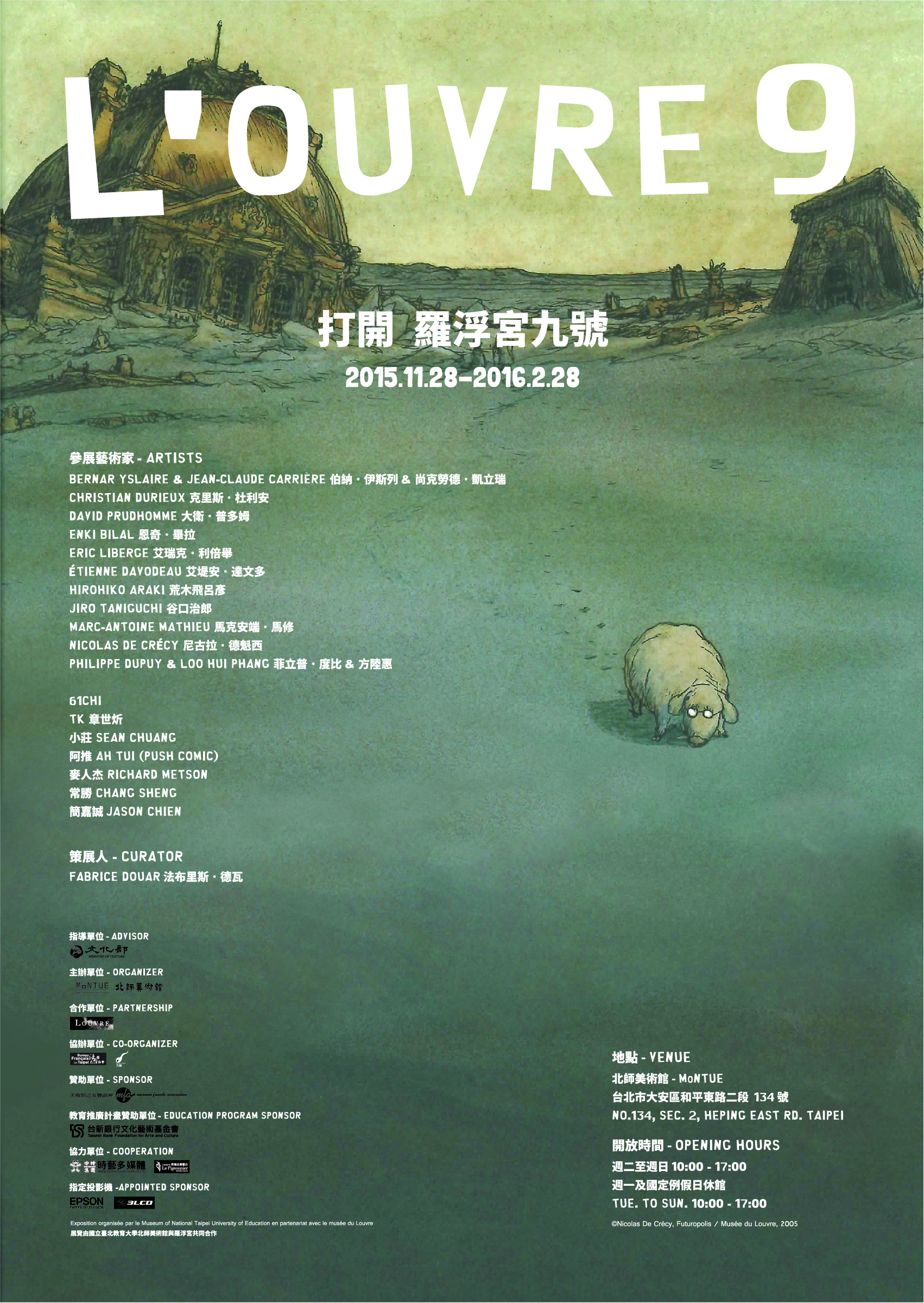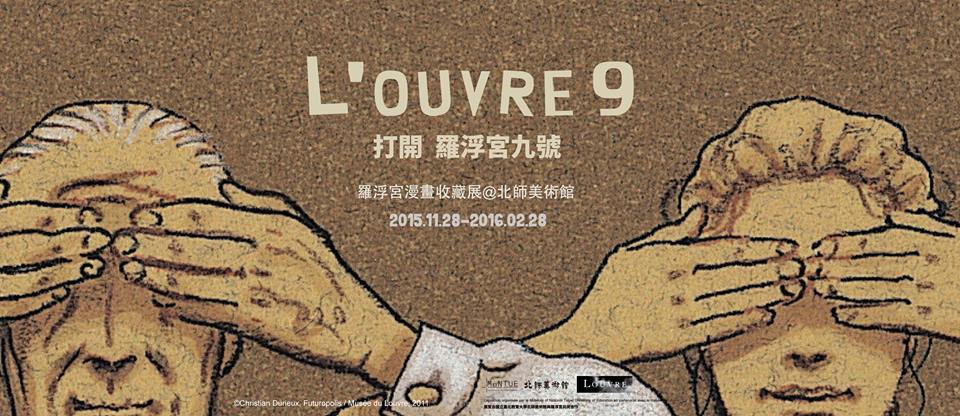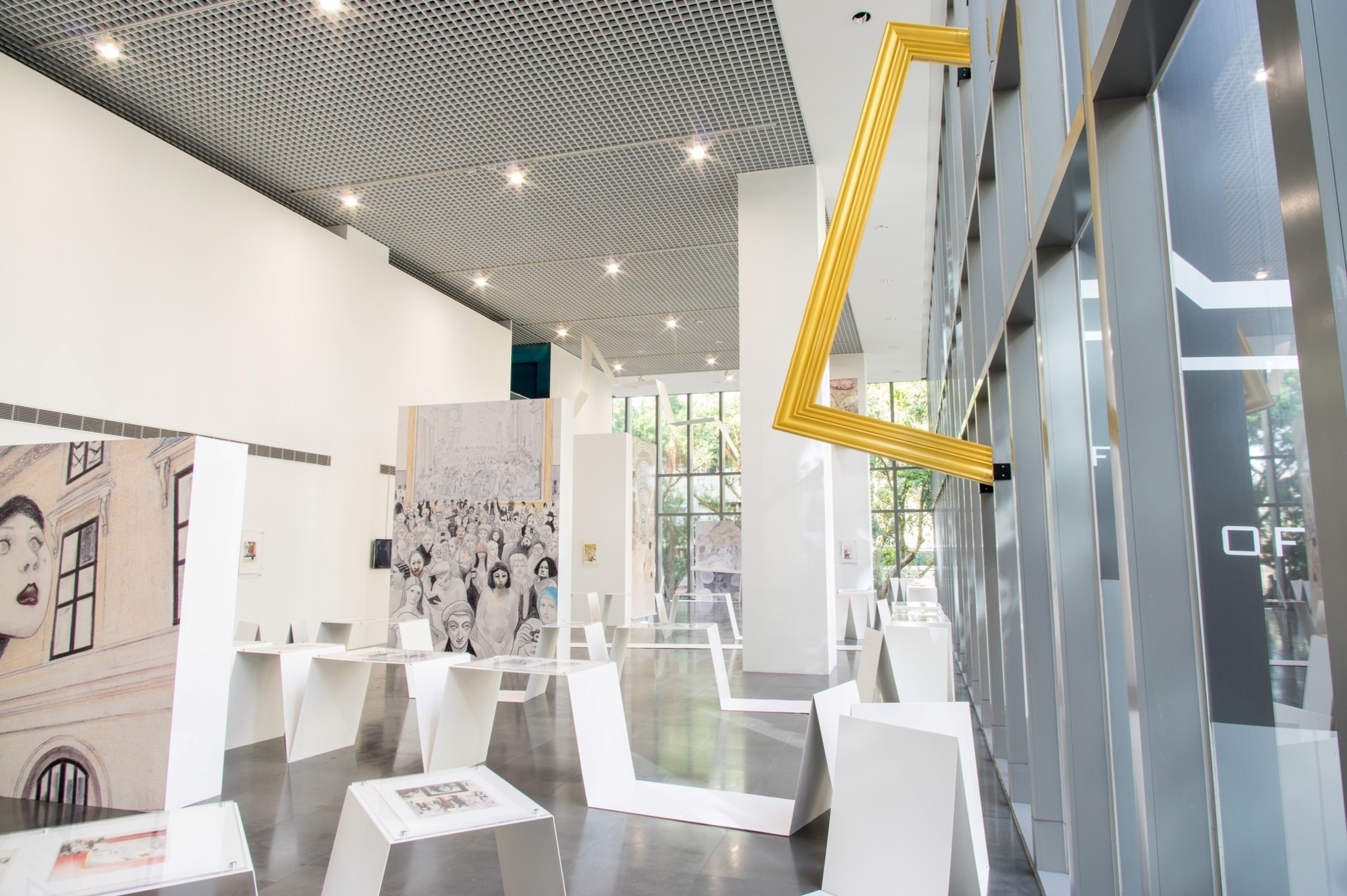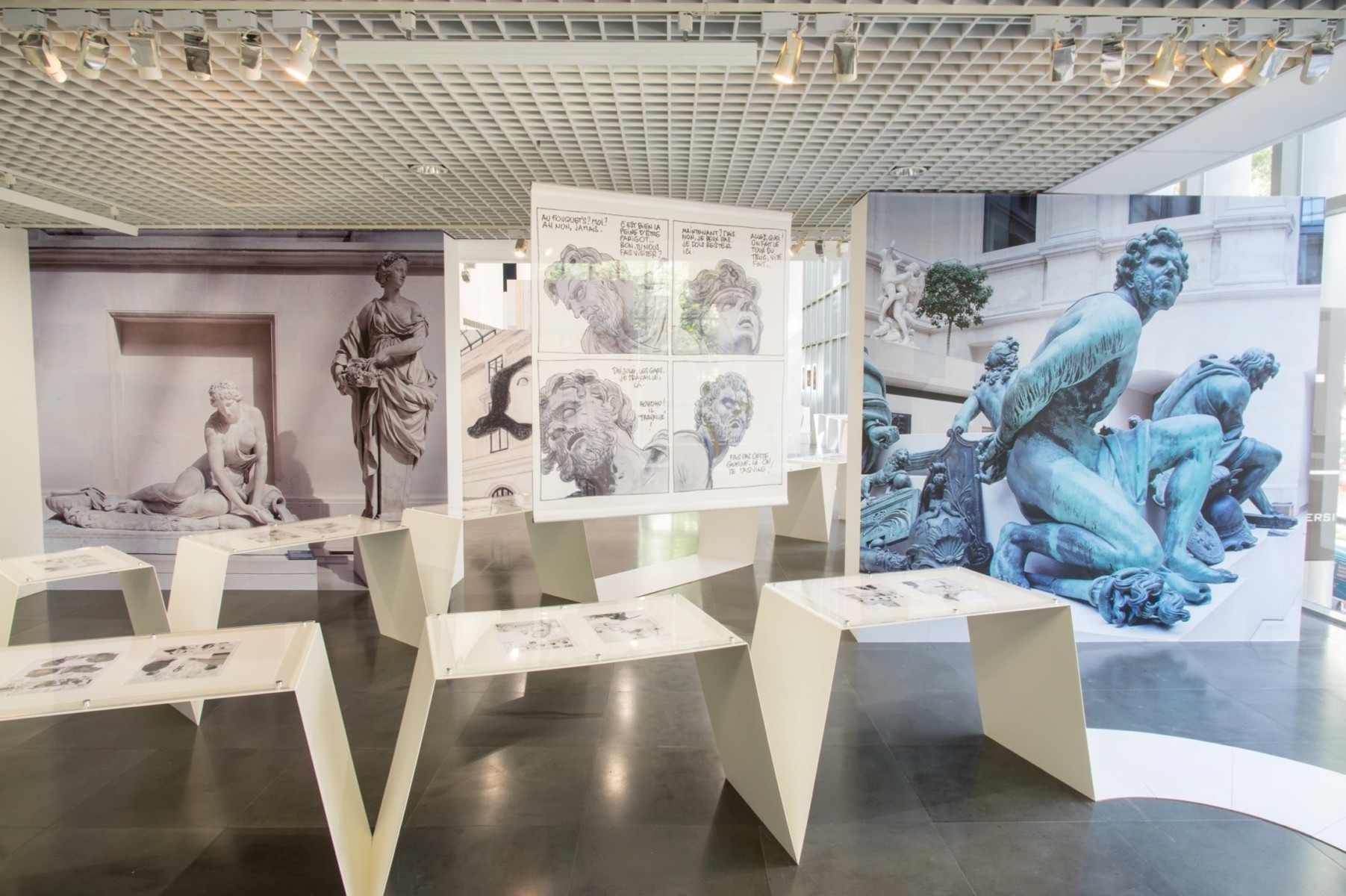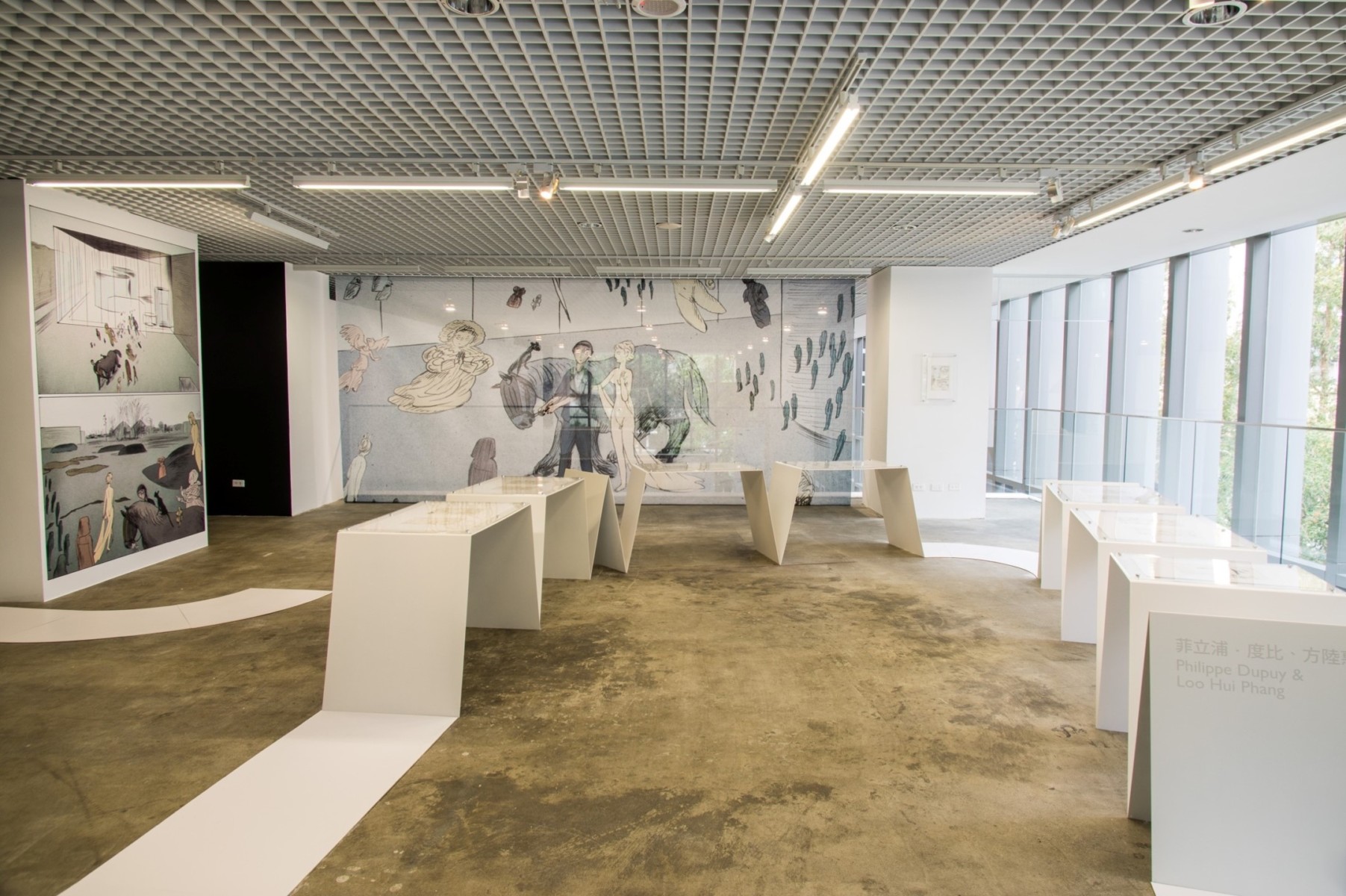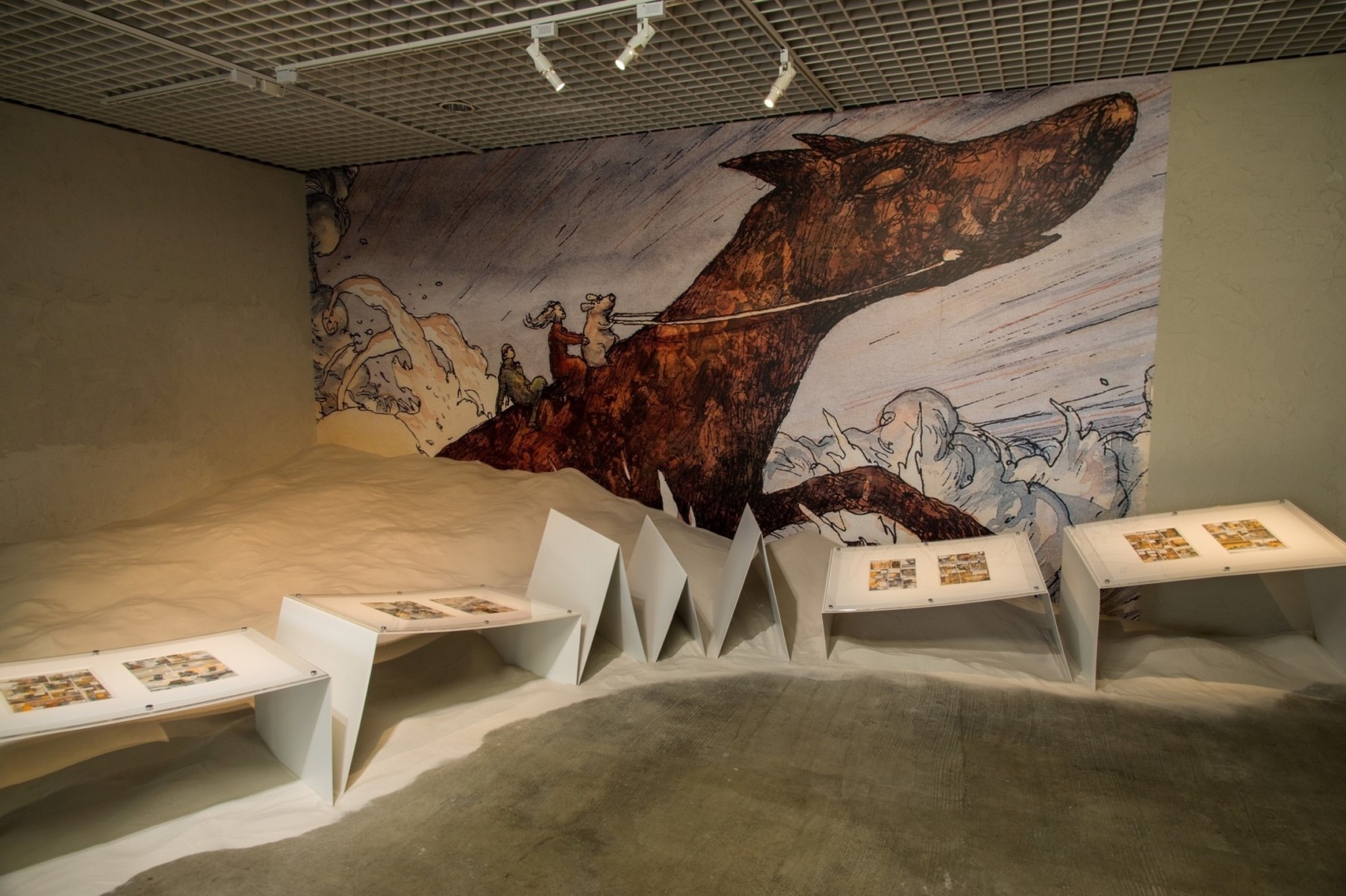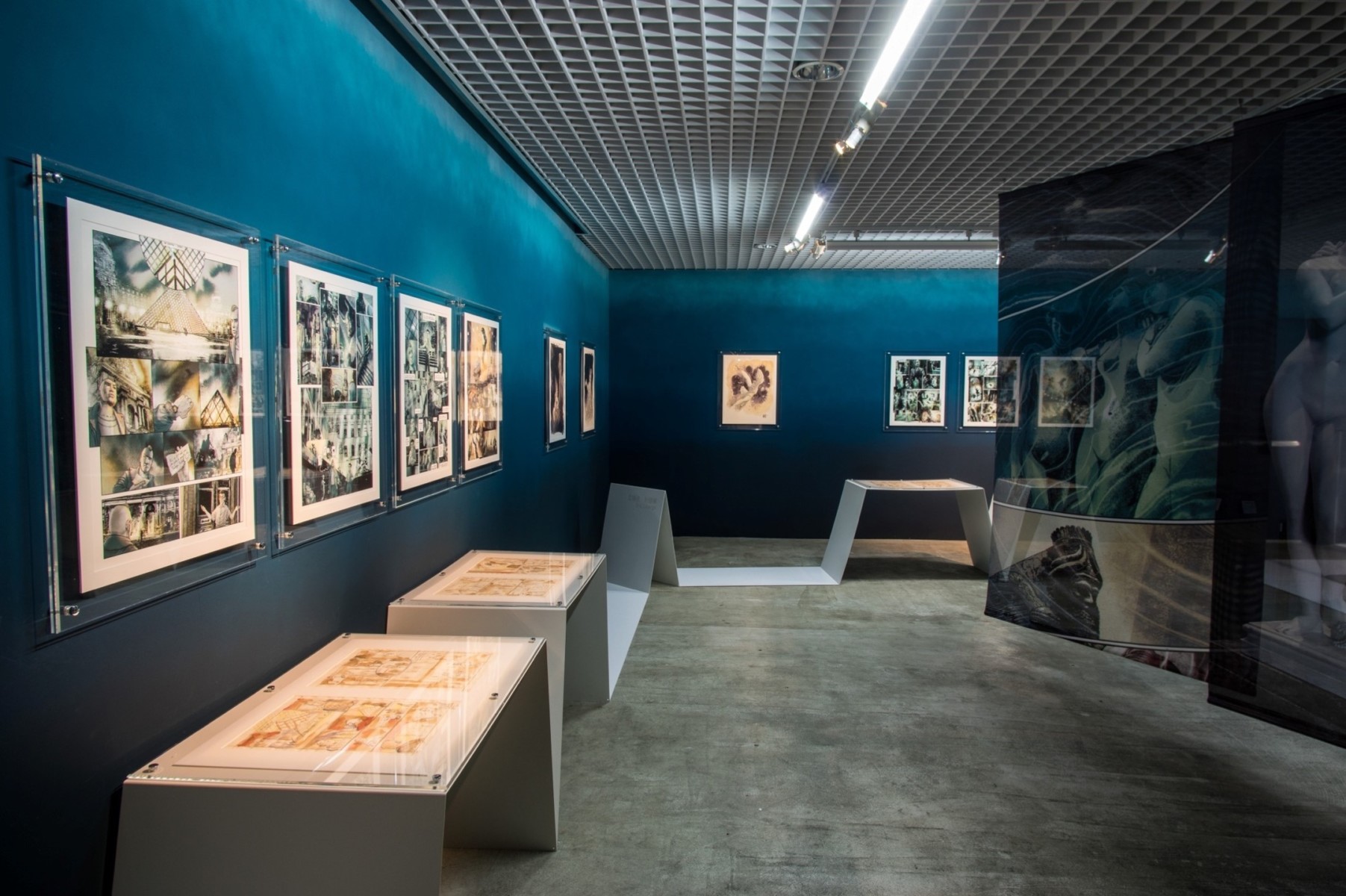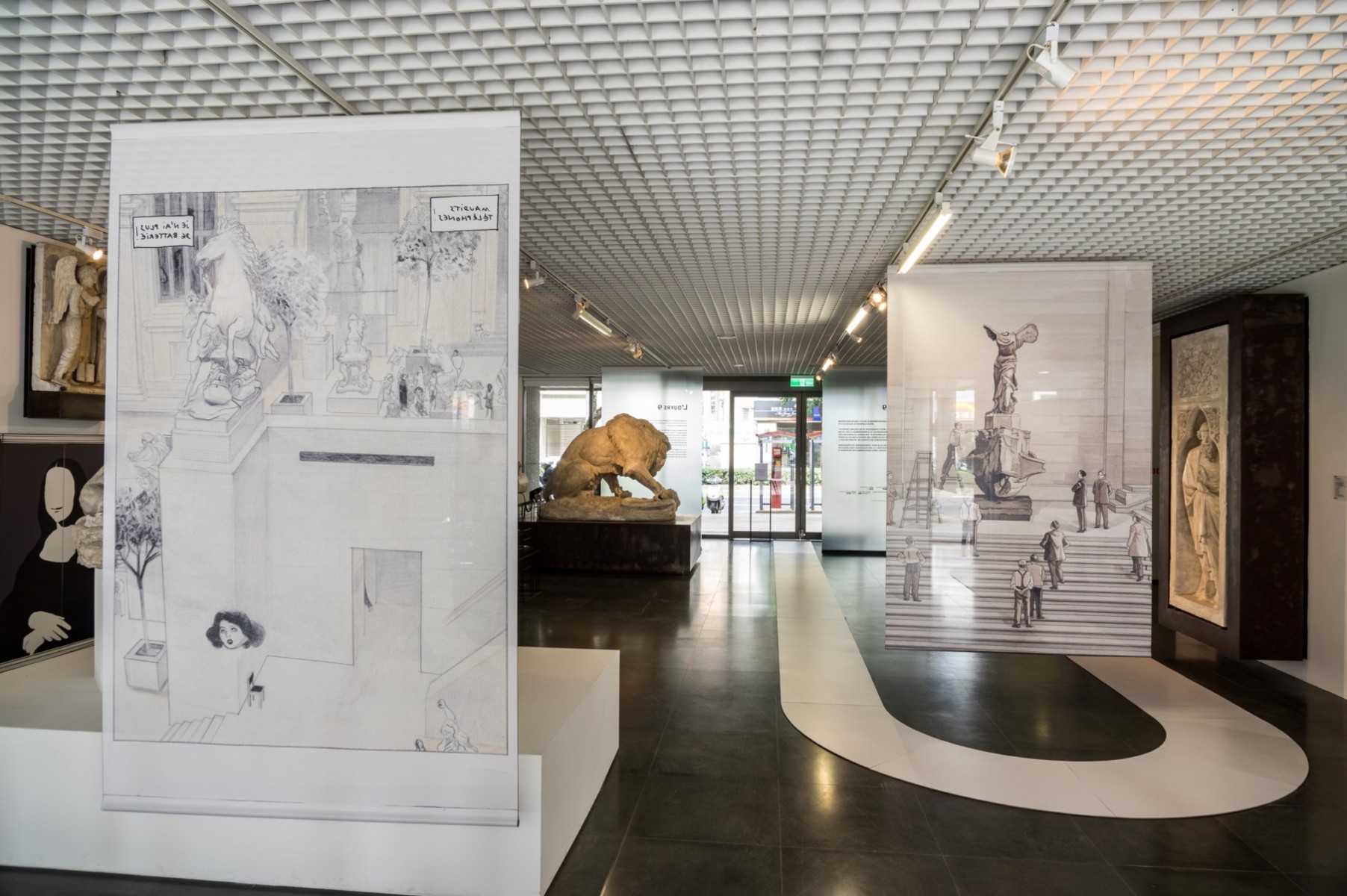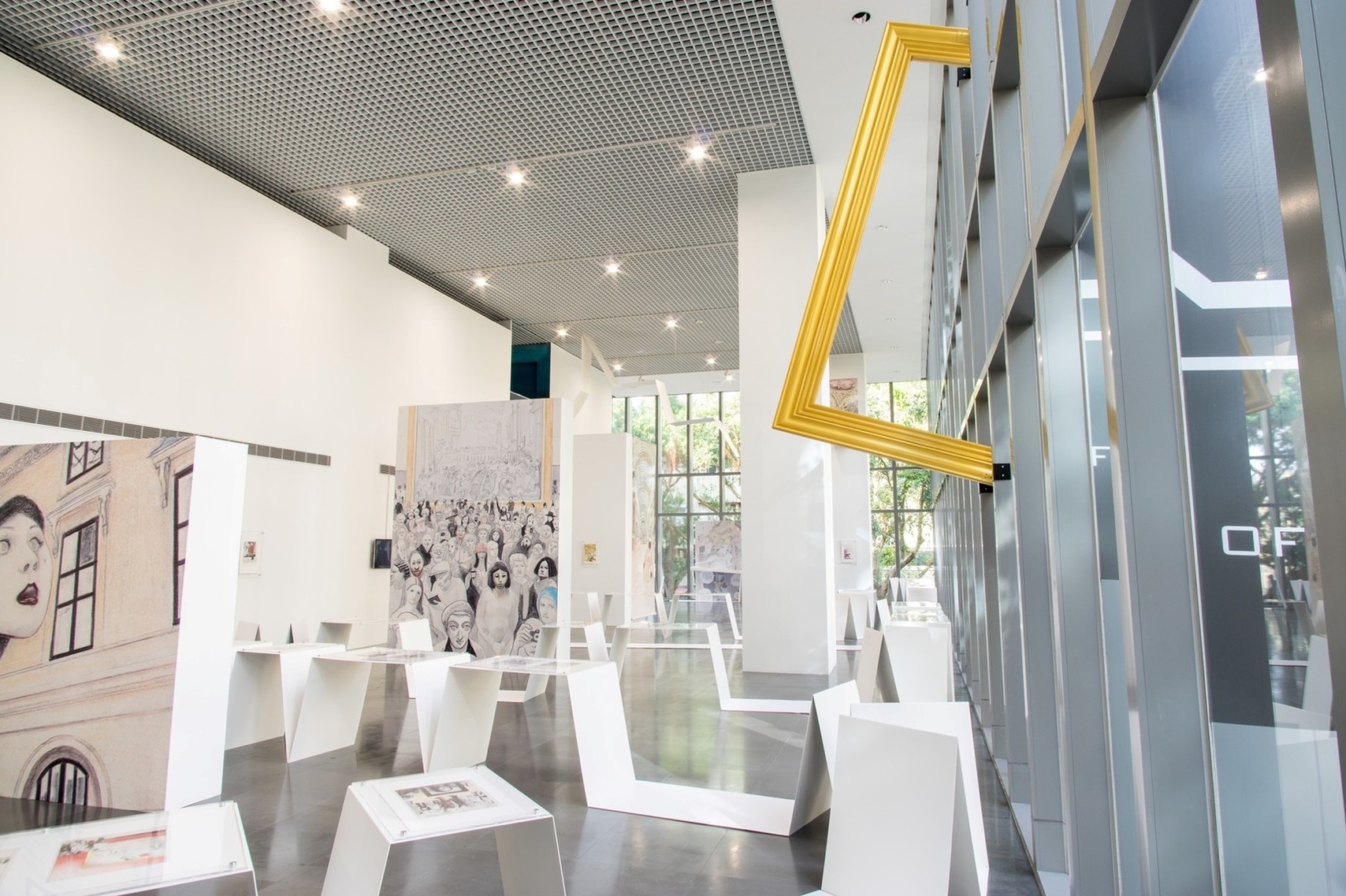2015.11.11-2016.02.28L’OUVRE 9 L’OUVRE 9
Comics—the “Ninth Art”—constitute an artistic phenomenon that has been booming for some 30 years, and France is at the crossroads of many exchanges and influences that are current in this art form. That is why the Louvre Museum wished to go out to meet comics, as a new form of contemporary creative activity, and to associate this art with the museum’s cultural policy of openness to all of society. The aim of the Louvre’s collection of comic albums is to establish a dialogue between the museum, its artworks, its collections, and the gaze of today’s public as mediated through the eyes of the artist. Each of the invited authors is given complete creative freedom, a “carte blanche” that facilitates a free exchange between the authors, their unique character, their creativity, and the museum, which we place at their disposal. The process is never confined within “objective” or “scientific” constraints derived from traditional history of art. This exhibition presents the fruits of this collaboration, which has now been under way for 10 years. Eleven artists have seized hold of the greatest museum in the world, and—each in their own way—have questioned the slice of cultural reality that this institution represents, or played with the fantasies that the museum’s collections arouse in each of us. On the 2nd Floor, Étienne Davodeau, David Prudhomme and Jirō Taniguchi represent the Louvre in the light, the Louvre that is open to the public by day. For some of them, their coming face to face with the artworks and the museum visitors leads to the discovery of an unsuspected heritage that becomes an important element of their fiction (Davodeau); it offers the opportunity to sketch from life the relationship between the public and the artworks, and to highlight some strange similarities (Prudhomme); or it brings back personal memories of the visitor that become mingled with the building’s history (Taniguchi). Hirohiko Araki makes a transition from light to dark by gradually carrying his story into the depths of the museum and its reserve collections, which are said to include a painting that is cursed. Who has never wondered what things may be hidden among the Louvre’s reserves? The second part of this level is darker, and primarily evokes the Louvre in a historical dimension: the imaginary dimension of works that are associated with a ghost who has haunted them since their creation, and whose story is told beside the image (Enki Bilal); or the historic dimension of the Louvre during the French Revolution (Yslaire). Christian Durieux rounds off this section by portraying a solitary nighttime visit by a politician reaching the end of his life, who finds solace thanks to a muse. On the 3rd Floor, Philippe Dupuy and Loo Hui Phang bring the Louvre-Lens in northern France out of the darkness of the coalmine that formerly occupied its site and into the full light of day. A dialogue takes place between the artworks and the site’s mining history. We then plunge back into darkness, with the Louvre buried under ice and being discovered by a team of future archaeologists who try to understand and decipher what they see before them (Nicolas de Crécy). Éric Liberge tells us of the nightlife of the Louvre, when the museum is closed. That is the time that the artworks choose to emerge from their physical “prison” and regenerate their souls under the watchful eye of a complicit night watchman. Finally, Marc-Antoine Mathieu takes us down into the very bowels of the Louvre, an organic, constantly changing museum that one of his characters is charged with inventorying. Is this endless task not the very quest of humankind? Within this interplay of darkness and light, which is an essential component of the art of drawing, we have chosen to present works according to two principles. Comics are a narrative art form intended for publication, but we should not forget that they are also works of art that can be appreciated individually. To maintain the link with publishing, running throughout the length of the exhibition are displays that present the works horizontally, in the form of a long scroll, and in narrative sequences like the chapters of a book. Thus the visitor can follow and understand the narrative logic of each author and the visual and drawing structures that he uses in his story. As a counterweight to this horizontal presentation, and for aesthetic effect, we have placed on the walls either photos showing parts of the Louvre that feature in the selected works, or individual page art or preparatory drawings from the works that tell the story of their creation, but which can also be viewed like any other work of art. Thus in this exhibition we have chosen to showcase the role of comics as a prime example of pure graphic art placed in the service of narration, of expression through drawing that brings people together by its evident spontaneity and immediate comprehensibility. To more clearly highlight this universal bond of drawing, we also invited Taiwanese artists to take part in the project. Seven artists responded to their European and Japanese counterparts, taking up the theme of dreams and invitation to a journey that the Louvre evokes. Once again, their individual perspectives, their cultural origins and their unique ways of expressing themselves immerse visitors in a special atmosphere and bring forth new images of the Louvre, new prisms through which visitors may see the greatest museum in the world, see art, and—why not?—see themselves….
